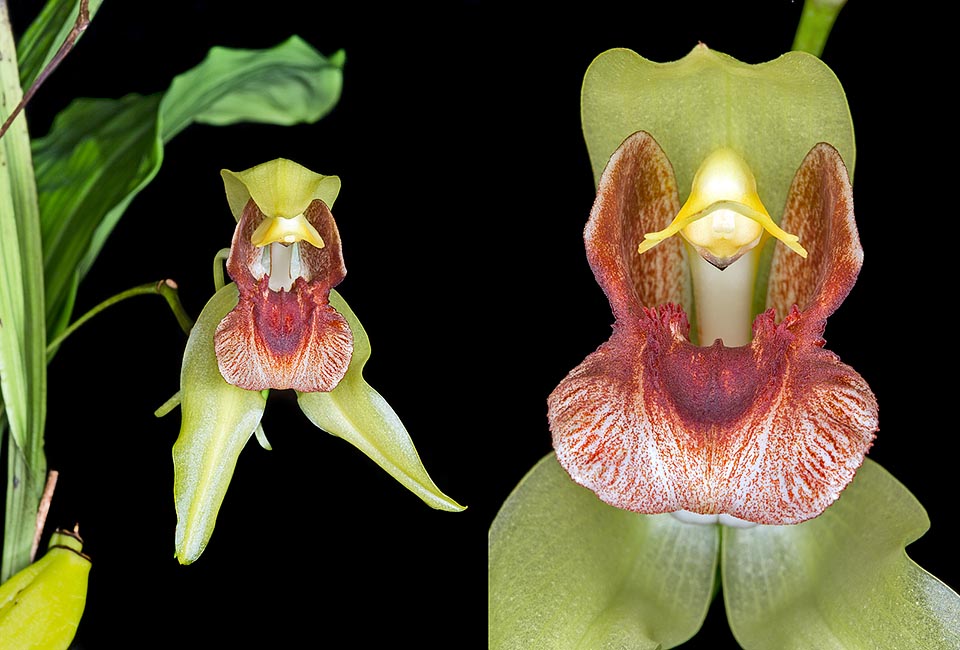Family : Orchidaceae

Text © Pietro Puccio

English translation by Mario Beltramini
The species is native to Sulawesi where it grows in the humid forests from the sea level up to about 1000 m of altitude.
The name of the genus is the combination of the Greek adjective “κοῖλος” (koilos) = hollow and of the substantive “γυνή” (gyne) = female, with reference to the concave stigma; the specific name is the Latin adjective “celebensis”, of Celebes, today Sulawesi, with reference to the origin site.
The Coelogyne celebensis J.J.Sm. (1917) is an epiphytic herbaceous species with creeping rhizome from where depart conical pseudobulbs, with almost quadrangular section, 6-12 cm long, with at the apex 1-2 obovate-lanceolate leaves with pointed apex, plicate, 30-60 cm long and 6-12 cm broad. Terminal inflorescence erect or slightly arcuate, 30-40 cm long, that originates from an immature pseudobulb hidden by the basal scales, bearing 3-12 flowers, of 7-10 cm of diameter, odourless, opening in succession, for about one week, with greenish white sepals and petals and orange labellum when opening turning dark brown on whitish background. Oblong central sepal with pointed apex, about 5,3 cm long and 1,8 cm broad, curved over the column, oblong lateral sepals with pointed apex, about 4,8 cm long and 1,5 cm broad, linear petals with poointed apex, slightly retroflexed, 5 cm long and 0,3 cm broad, trilobed labellum, about 5 cm long and 3,7 cm broad, with erect lateral lobes on the sides of the column and elliptic central lobe with slightly and irregularly toothed margin, run at the base by three keels, and arcuate 3,5 cm long column. The fruits are ellipsoid capsules 4 cm long and of 2,6 cm of diameter.

Native to Sulawesi island, Indonesia, Coelogyne celebensis is an epiphyte with conical pseudobulbs with quadrangular section 6-12 cm long with 1-2 30-60 cm leaves. Terminal inflorescence, 30-40 cm long, with 3-12 flowers opening in succession. Right, enlarged detail, seen from below, evidencing the two pollen sacs © G. Mazza
Robust and big species that requires a semi-shady position, medium-high temperatures, 22-32 °C, with night lowest ones not under the 15 °C, high humidity, 70-85% and constant ventilation. The waterings must be regular, but allowing the substratum to dry up before giving water again and avoiding stagnations on the emerging vegetation, utilizing rain water, demineralized or by reverse osmosis. Monthly fertilizations with a balanced hydrosoluble product, with microelements, at ¼ of the dosage suggested. It is usually cultivated in pots or baskets with draining and aerated compost that may be formed by medium-sliced bark fragments with possible addition of sphagnum at the base of the plant if the cultivation ambient is rather dry. The repottings are to be done when the new root appear.
The species is reported in the appendix II of CITES (species whose trade is internationally ruled).
Synonyms: Coelogyne platyphylla Schltr. (1925).
→ For general notions about ORCHIDACEAE please click here.
